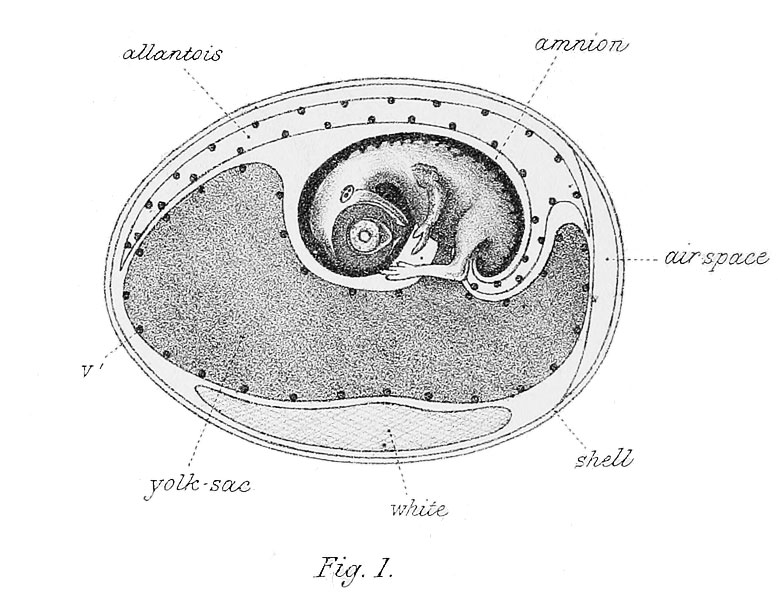File:Ewart1897 01.jpg
Ewart1897_01.jpg (778 × 600 pixels, file size: 96 KB, MIME type: image/jpeg)
Fig. 1. The hen's egg at the ninth day of incubation
The embryo is connected by a short stalk to the yolk sac, which contains nearly all the food required during the developmental process. The additional nourishment is provided by the white or albumen which surrounds the yolk. The allantois at an early stage grows out from the intestinal tract, becomes extremely vascular, and plays the part of a breathing organ. Numerous vessels are also formed in the wall of the yolk sac ; the dots are intended to indicate that the yolk sac and allantois are vascular. The shell is lined with a thin membrane. At one end this membrane is separated from the shell, leaving a space — the air chamber.
After Milnes Marshall.
| Historic Disclaimer - information about historic embryology pages |
|---|
| Pages where the terms "Historic" (textbooks, papers, people, recommendations) appear on this site, and sections within pages where this disclaimer appears, indicate that the content and scientific understanding are specific to the time of publication. This means that while some scientific descriptions are still accurate, the terminology and interpretation of the developmental mechanisms reflect the understanding at the time of original publication and those of the preceding periods, these terms, interpretations and recommendations may not reflect our current scientific understanding. (More? Embryology History | Historic Embryology Papers) |
Reference
Ewart, J.C. A Critical Period in the Development of the Horse. London: Adam and Charles Black (1897).
File history
Click on a date/time to view the file as it appeared at that time.
| Date/Time | Thumbnail | Dimensions | User | Comment | |
|---|---|---|---|---|---|
| current | 15:31, 3 May 2013 |  | 778 × 600 (96 KB) | Z8600021 (talk | contribs) | {{Ewart1897 figures}} |
You cannot overwrite this file.
File usage
The following page uses this file:

